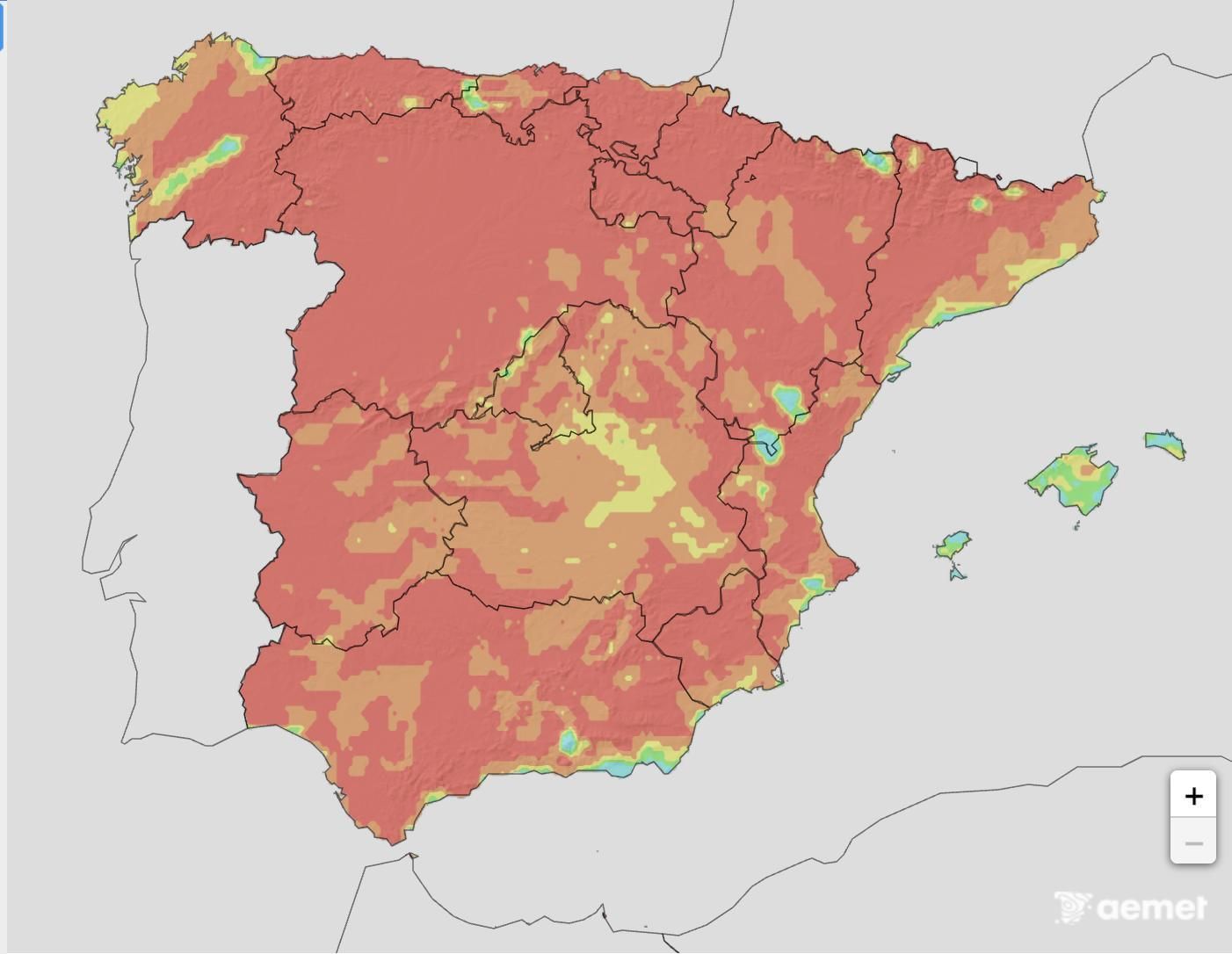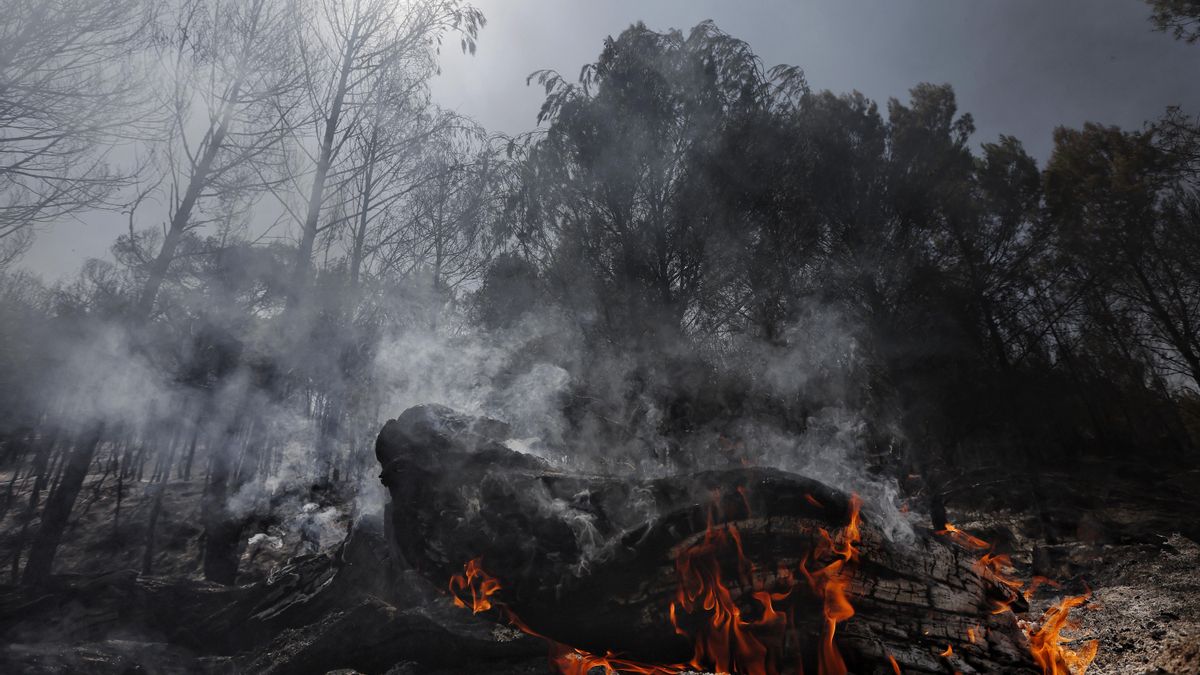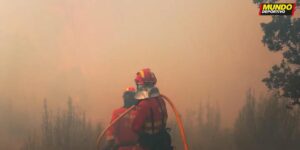Not a week without its fire – or fires – devastating. According to the extreme heat, Spain has gripped, largely driven by the climatic crisis, large forest fires have occurred until it was played, at the moment, this weekend When the medulla burned (León).
If on May 31 the official statistics showed a great forest fire (GIF) declared in Spain, that is, with 500 or more hectares calcined, the official figures on August 3 already collected 14, according to the Ministry of Ecological Transition. Actually, this Monday has reached the 22 highly destructive accidents. The progression of summer has been: from a great fire to 5 at the end of June, 12 at the end of July and 22 before the middle of August.
Although in Spain there are currently less fires than 20 years ago (the average between 2015 and 2024 fell 35% compared to the previous decade) “the proportion of large forest fires (GIF) with respect to the total accidents has not stopped growing”, According to the WWF organization analysis. “They barely suppose 0.26% of the total, but in them the greatest environmental and social impacts are recorded,” concludes the organization. On average, in this decade there have been 23 large fires per year, a figure about to be reached when there are many weeks of the high -risk season.
“Climate change is making more opportunities in which these landscapes can be burned more generalized, intense and dangerous,” analyzes the head of the Department of Biodiversity and Global Change of the Mixed Institute of Research in Biodiversity (University of Oviedo-CSIC), Cristina Santín, in an analysis for the Media Center Spain (SMC).
More opportunities because the climate alteration causes heat waves to be earlier, frequent and intense, that is, it creates the weather conditions for fires to fire: very high temperatures, very little humidity and strong winds. In fact, the Fire Meteorological Risk Index has grown in Mediterranean countries so that the fire season has stretched 55% since 1980.
Without going any further, at the beginning of this second heat wave of the summer of 2025, the State Meteorology Agency (Aemet) projected that for last Sunday, almost the entire Iberian Peninsula would enter the extreme danger of forest fire. A map quite similar to the one that AEMET draws for this Tuesday.

During the first prolonged extreme heat episode (at the end of June and early July) the fire occurred, so far, more destructive of the year in Torrefeta (Lleida), with more than 6,000 carbonized hectares, many agricultural land. Two people died against flames who advanced at speeds close to 30 kilometers per hour.
Santín adds that such a situation was “expected” when arriving an extreme heat after a very humid spring, to which it has been added that it is “relatively easy that somewhere there is a spark that begins a fire. We have all the ingredients for the Molotov cocktail that we are seeing right now.”
Ten years ago, in 2015, an official government report on impacts and vulnerabilities From Spain in the face of climate change, it warned: “The situations of greater danger will be increased as well as the fire station.” “Until the middle of the century, climate change will be little variable, therefore, planning must be based on the projected climate, not on the past,” he said. That is, the effects of climate change were going to be felt by inertia already generated by accumulated greenhouse gases.
The report also stated that climate change would bring with it an “increase in the average meteorological danger, as well as extreme situations.”

A decade after that report, in this August, 2025, the Professor of Regional Geographic Analysis Cristina Montiel Molina underlines, precisely, the relationship between the climatic crisis and these large simultaneous fires: “The extreme temperature records are generating this risk due to the concentrated and prolonged impact of heat in vegetation and on the ground, although the rains of the past spring have prevented the holiday Water ”.
Although the fire in Las Médulas has copied holders for the destruction of a place classified as a World Heritage, the payroll of devastating fires has been distributed in various areas of the Peninsula. Thus GIFs have occurred in El Burguillo (Sevilla), Alcollarín (Cáceres), Talarubias (Badajoz), Torrefeta (Lleida), Paüls (Tarragona), Méntrida (Toledo), Navaluenga (Ávila), Valdecaballeros (Badajoz), Trujillo (Cáceres), Cuevas del Valle (Ávila) (Cáceres), Terroso (Ourense), Navas del Marqués (Ávila), Chandrexa (Ourense), Aldea del Cano (Cáceres), Oliva de Mérida or Molezuela de Carballeda (Zamora).
“It is striking that areas of the center and northwest are burning, theoretically less prone to severe fires compared to the Mediterranean coast,” analyzes the professor of the Department of Animal Biology, Edaphology and Geology of the University of Laguna Jesús Santiago Notario of the Pino for the SMC. And it finishes: “Extreme and prolonged heat conditions favor a scenario like the current one.”






